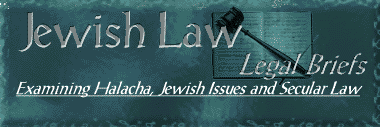

Vacco v. Quill
Supreme Court of the United States (1996)
Having demonstrated that there is no fundamental right to physician assisted suicide contained in the Fourteenth Amendment, we proceed to the review of this state legislation under the Equal Protection Clause of the Fourteenth Amendment. It was upon this basis that the Court of Appeals for the Second Circuit struck down New York's proscription of assisted suicide. The Second Circuit held that New York lacked a rational basis for treating differently, what it deemed to be, similarly situated classes of terminally ill persons.
A. THE STATES HAVE NOT LEGISLATED THE DISPARATE TREATMENT OF SIMILARLY SITUATED INDIVIDUALS
Prior to proceeding to a discussion of rational-basis review, however, a threshold issue must be raised. Central to any equal protection analysis, including that engaged in by the Second Circuit, is the treatment by the state of similarly situated individuals (or classes of individuals) differently. To embark upon its equal protection analysis, the Second Circuit interpolated the creation of two categories of terminally ill persons into the New York statutory scheme. Thus, after reviewing the principles of rational-basis review, the court asserted that:
New York does not treat similarly circumstanced persons alike: those in the final stages of terminal illness who are on life support systems are allowed to hasten their deaths by directing the removal of such systems; but those who are similarly situated, except for the previous attachment of life-sustaining equipment, are not allowed to hasten death by self-administering prescribed drugs.
80 F.3d at 729. What is overlooked by this reasoning, however, is that the statute prohibiting the assisting of suicide does not speak to the terminally ill alone. It is a provision of the Penal Law that is generally applicable to those who would assist in the suicide of a perfectly healthy individual just as much as one who is terminally ill. See, N.Y. Penal Law 125.15, 120.30. Thus, it is inappropriate to read as one whole cloth of this generally applicable provision and the legislature's decision to permit the refusal of continued life-support, N.Y. Pub. Health Law 2980-94, or resuscitation, N.Y. Pub. Health Law 2960-79.
It has long been recognized that legislatures may seek to address various issues which confront our society piecemeal and need not address all phases of an issue at once and still have its enactments survive equal protection review. See Williamson v. Lee Optical, 348 U.S. 483 (1955). Here, the State of New York determined years ago that giving assistance to suicide was to be prohibited. See Quill, 80 F.3d at 733 (opinion of Calabresi, J., concurring). The fact that in more recent years the legislature has determined to permit a narrow class of individuals "the terminally ill on life-support" to arrange for the discontinuation of the active sustaining of their lives or for ordering that medical professionals do not intervene and resuscitate them should the life support mechanisms fail, does not indicate that the legislature has created a classification scheme among the terminally ill or as between the terminally ill and all other citizens.
Thus, the Second Circuit erred in holding that the New York statute violated the Equal Protection Clause for irrationally classifying groups of terminally ill persons differently. In fact, New York's laws do not classify the terminally ill into different categories. Therefore, rational-basis review is inapplicable.
1 | 2 | 3 | 4 | 5 | 6 | 7

DISCLAIMER
|
|
Page 5 of 7 |
|